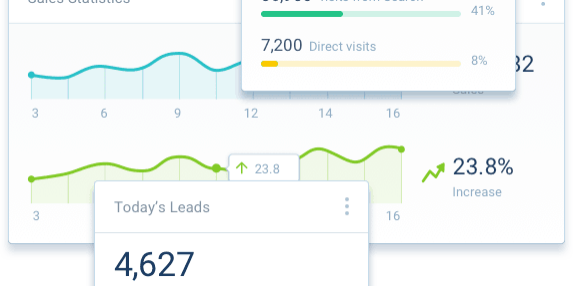Remarketing In Paid Search

Remarketing can be an incredibly effective tool for staying top of mind in an increasingly fast paced online consumer marketplace. It’s an important topic that we’ve covered before, but today we want to focus solely on paid search remarketing and how and why it has evolved.
Remarketing in paid search means specifically targeting people who have visited your website before – and doing so with paid search ads unique to their experience. Many times, you are already reaching a customer base that is ready to buy with paid search – add to that fact that your target audience has visited your business before, and you have a potent combination ready to earn you some ROI.
Bing & Yahoo
Bing Ads has launched its native advertising in beta on MSN.com, a development that will expand and offer a remarketing component. Bing follows closely on the heels of Yahoo, which has experienced success with the advent and growth of its Gemini platform. Yahoo Gemini is solely focused on mobile advertising, and specifically the connection between mobile and native advertising.
Site retargeting is already offered in Bing’s existing search advertising program (though it is a relatively new feature, only available to select advertisers but slowly rolling out to everyone over the year), but this new move is a part of Bing’s overall goal to create a more “audience based” solution. Audience based technologies allow advertisers to customize ads to specific audience segments, and focus more on consumer behavior. It will use insights about specific experiences to tailor advertising – and it’s something that will change the way we advertise on Bing.
But, back to the point…
Universal Event Tracking in Bing increases the effectiveness of remarketing in paid search. One tracking code across your site captures incredibly meaningful data about users like time spent on site, how many people visited your destination URL, and more. Plus, it allows you to track how you’re performing against your conversion goals.
Remarketing using UET in Bing will allow for unique customization of your keywords, bids and ads to people who have visited your site before. You can tailor ads specific to your previous visitors to remind them why they want to purchase from you. You can even exclude an audience that has already purchased from your site. Utilizing the UET to make actionable audiences and then using these audiences in creative ways are the keys to a successful remarketing strategy.
Remarketing in AdWords
We can’t say it better than Search Engine Land:
“Customers currently using Remarketing in Paid Search have experienced improved click-through and conversion rates, some seeing as much as a 7x bump in both measures. And customer data is protected with strict remarketing policies that help to build and maintain trust, a marketer’s most valuable asset.”
RLSA – meaning Remarketing Lists for Search Ads – is the term used for utilizing remarketing in Adwords paid search. You can create your ads, choose keywords and customize bids in an effort to specifically recapture those who were previously on your website. With the Universal Google Remarketing Code, you only have to add one tag to your website in order to create remarketing lists. More on that here.
Remarketing in Paid Search is Only Growing
Audience based solutions will only become more sophisticated – with cookie tracking evolving, audience data becoming more detailed, and searcher intent becoming ever more discernable. This will make remarketing more effective and more meaningful as technologies continue evolving.
Think we missed something? Tell us on Facebook!
Recent Posts
In the competitive world of real estate, pay per lead models have emerged as a…
You’ve heard it here, you’ve heard it there, you’ve heard it from any SEO agency:…














